It is no secret that I like to use manipulatives with the children. I realize how important that extra sense of touch and the manipulation of objects can be in helping a child to learn. Through the years we have used manipulatives for both math and language arts. When the children were younger, they learned to read using all sorts of letters, from magnetic letters and foam letters, to blocks and even felt letters. I even made some beginning reading and C-V-C magnet word cards. Of course, most of these were for words representing nouns, as those are things that can be seen and understood by preschool children. When I discovered that there were word cubes that could be used to teach grammar, I couldn't wait for the opportunity to try them out. I was thrilled when we were chosen to review the English Grammar Teaching Method from English on a Roll.
This program can be used by children as young as five who are beginning readers through adults who are learning English as a Second Language. They also work well for those in Special Education programs. If a student can benefit from hands-on, multisensory learning, this program may just be the way to go.
We were sent the Instructor Manual along with the set of 40 color-coded word cubes, which also included a sheet of 30 small, blank labels. This set can be used with up to six students. Though I have been focusing on using it with one child.
The 142-page Instructor Manual contains a Cube Guide and an introduction section titled, "About English on a Roll," then it gets into the 37 lessons, each of which is 3-4 pages long.
The Cube Guide is a helpful reference to see how many of each type of cube group there are plus a full list of the words.
As you can see in the above chart, these cubes are color-coded. Here is a full list of which colors go with which part of speech:
- Blue - Pronouns
- Green- Question Words
- Dark Blue- Nouns, Articles, and Prepositions
- Red - Verbs
- Orange - Adverbs
- Purple - Adjectives
- Black - Punctuation and Conjunctions
- Blank - To allow for customization, adding extra words
The introduction section of the manual goes into the importance of manipulatives and the Multisensory Structured Language (MSL) teaching methods. It also explains why English on a Roll is special, who can learn using it, and who can teach with it. Finally, don't miss the "How Does it Work?" section. This has very important information and tips.
Here is what the first page of a typical lesson looks like:
The gray box at the top of the page is a quick look at what is needed for the lesson.
- The Prep section lists which cubes are needed (you only get out the cubes that are needed during the lesson, as to not overwhelm the child), the pages that need to be copied, and any additional materials needed.
- The Note section contains tips for the teacher.
- The Vocabulary section shares and defines the new words being taught.
Then you will find the actual lesson that is to be taught. It is broken into three sections.
- Teach the Concepts: explains, step-by-step and in detail, how to teach the lesson using the cubes and printable worksheets.
- Conversation/Games: gives ideas for practicing the concepts that were learned.
- Written Exercises: tells you which worksheet the child will be working on.
The reproducible pages finish up the lesson. Don't worry, the copyright allows for printing copies for a classroom or family. There is a page that helps you work through the new concept together, and then a worksheet for the child to work on and fill out. As I am working one-on-one with Hannah, I haven't even been photocopying the practice page. I just open the book to the page, and we work right from it. I do give her her own copy of the worksheet though, as there are blanks that need to be filled in.
For now, I've found that this folder works well for keeping her papers organized.
Let's talk a little more about the actual cubes.
The are stored in this heavy duty plastic box:
The lid snaps securely to keep the cubes safe.
As you can see, those cubes are packed in tight. So, I was very thankful for a hint that was shared by the company. While the box is closed, turn it upside down, then open it. The lid has a bit of a lip that helps contain the cubes, but they can be easily removed.
These one-inch cubes are just the right size to fit in a hand to be rotated or rolled. They have some weight to them, but aren't too heavy. The words are etched onto the surface and are easy to read. The one thing I wish was different is, I wish they were written in lower case letters, as that is the way I insist my children write their words, unless they are writing the first letter of a proper name or starting a sentence. At first Hannah was filling in her worksheet using all upper case because she was using the cubes as a guide. She seems to be remembering to use lower case now though.
The words on each cube are somewhat related. For instance, the noun cubes contain the singular and plural of three different nouns. One verb cube will contain all the forms of that verb. One pronoun cube will contain the forms of the specific types of pronouns (subject pronouns, object pronouns, etc).
As we work through these grammar lessons, the children will get to utilize more and more of the cubes. They start out learning about and working with subject pronouns (I, you, he/she, it, we, they), then are introduced the "be" verb and are taught the relationship between the words. Hand gestures and the simple stick people illustrations help a student to make the connection.
I do have to say, I didn't really use all the suggested hand gestures. They appear that they would be helpful for someone really young or who was using these in an ESL setting perhaps. For example, it is written to demonstrate "How many?" this way, "Put one finger up, make a questioning face and say, "How many?" Put your finger up again and say, "One." Do the same with two fingers, etc." As Hannah already understands the words that we were supposed to be demonstrating, I didn't feel we needed to go through the motions.
I did however appreciate the ways of demonstrating the pronouns, using the page to guide us while we pointed to ourselves or each other or the siblings in the room. She then got to review the pronouns by rolling the subject pronoun cube and finding the corresponding picture.
These tips are helpful reminders even now that we are further into the lessons because she has needed reminding which pronoun to use when having to go from singular to plural.
After learning about the subject pronouns and the "be" verb, we moved on to regular nouns that start with consonants and using the article "a." Once this was learned we were then able to make simple statements, putting it all together: Pronoun, "be" verb, article, noun, punctuation.
On the worksheet, Hannah needed to fill in the blanks to complete these sentences, using the simple drawing to guide her. Such as, "I am a student." and "She is not a car. She is a student." She had to make sure the pronoun agreed with the "be" verb and the noun, also making sure to use the singular and plural forms correctly.
I love the way the lessons build on one another. After learning how to make the simple statements, we moved on to "Yes/No" Questions, where she had to change the sentence from a statement to a question.
The next lesson focused on answering those "Yes/No" Questions. We moved on to learning when to use "a" versus using "an," which then progressed into learning there are irregular and noncount nouns.
We are currently on lesson 10, which focuses on "who" and "what" questions. As we continue through the lessons Hannah will be learning to make sentences with adjectives, learning about possessive adjectives, prepositions, verb tense, and so much more. When we get into these later lessons, I will also be having Tabitha and Amelia join in the lessons. Right now, they have mainly been using the cubes to play at building whatever sentences they want. Harold has also been trying to build sentences with the cubes, but has mainly been making nonsense sentences.
Hannah and I have been working our way through the lessons slowly. I have Hannah work on grammar a few times a week at least. However, some of those days are just short review days to help her master the concepts already learned before moving on to the next lessons. I have noticed she continues to make mistakes when changing sentences that start with "I" into plural. She wants to use "you" or "they" not fully realizing that the correct plural would be "we." Sometimes a lesson will take a few days to complete because she struggles with the writing portion, so I allow her to do 4-5 sentences a day, instead of the whole page at once.
There definitely are some lessons that have quite a bit of writing. Though the program can be used with children as young as five, I would say it is better suited for children who are mid elementary school age when it comes to the writing required. Not only is there a lot of writing, but the blanks on which the student is to write their answers is not really suited for younger children who don't have their fine motor skills developed for writing in small areas. A quick substitution of some lined writing paper helped Hannah immensely.
I didn't even have her try to write on the provided worksheet for the following lesson. I just handed her some lined paper.
You may notice that, even with the lined paper in the first image, Hannah's writing was quite sloppy. She was already frustrated when I made the change of paper. That is why I have decided to start with the lined paper from now on if it will work. I have also started requiring only a portion to be written, the rest of the time she just shows me she knows the answer by using the cubes.
These adaptations have helped immensely. We really do enjoy this program. Hannah says she enjoys being able to use the cubes and make sentences. But she is not a fan of the writing. I guess the main point is, you need to make it work for you. Thankfully, this program is very adaptable. It is actually designed to be used more in a group setting, and was quite easily adapted for one-on-one work. If your child is not as advanced in their writing skills, you could either write the answers for them while they narrate, provide different paper, or you could have them stick to using the cubes.
I am quite impressed by the grammar that we have been working on, and what is to come in the book. The fact that the program builds on itself slowly is wonderful. I've noticed that the book we received is labeled as "Book One," so I am anticipating that this is a program that we may possibly be able to continue with.
You can find English on a Roll on Facebook
Don't forget to check out my fellow Crew Mates thoughts. Just click on the banner below:






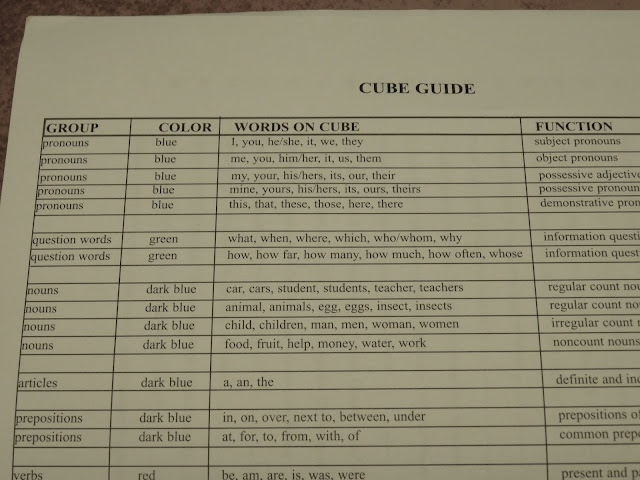

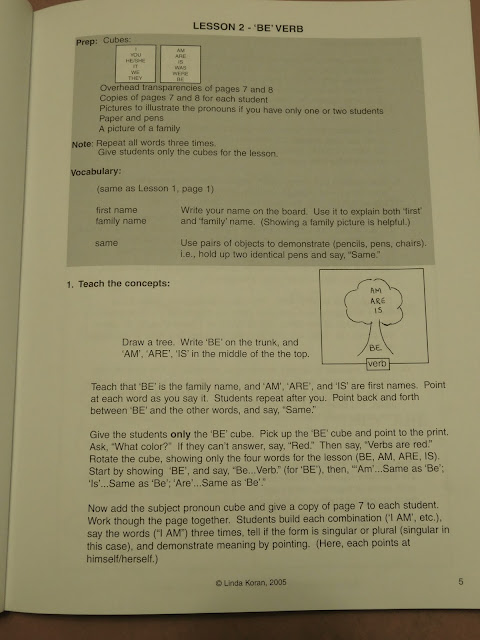
















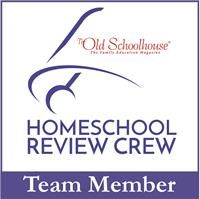















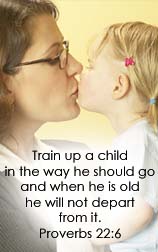



![[PREMIO2009.png]](https://blogger.googleusercontent.com/img/b/R29vZ2xl/AVvXsEjXD_Gx-wZ9EM5hXKrEYLksEBkYfRQtmb8VDVTDG_yyLggQoFIstZsh4zszdG20KqErZicRzEhiNYLty7j3IMXJYsABqkXjr8pp-ncj71xCbpxlXGbGpZq2fTuDQqq1RMKV4DPcDBnBViA/s1600/PREMIO2009.png)
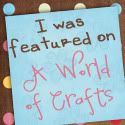
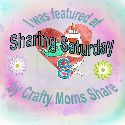


No comments:
Post a Comment
Thank you for visiting my blog today. I love to read your comments, so please leave me one if you have the time.
Blessings